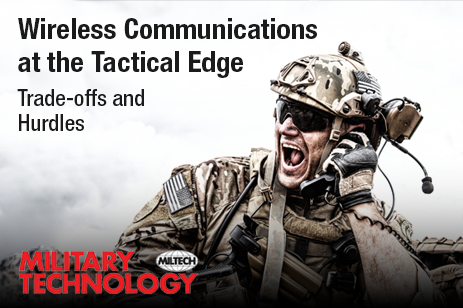
Published in MILITARY TECHNOLOGY (MILTECH)
Written by Dominic Perez
Warfighters on the battlefield have relied on wireless communications for more than 80 years, dating back to the first Motorola ‘manpack’ radio used by the Army Signal Corps in the 1940s. Over the decades, advances in wireless technology have enabled these radios to shrink considerably in size, to the point at which we have the hand held radios we have become familiar with today. Modern wireless communications have evolved far beyond the basic voice communications on the move supported by World War II era manpacks.
Today, to maintain situational awareness, our warfighters depend on wireless communications capabilities that range from data, voice, video, and even helmet-based augmented reality displays. With these added capabilities comes a greater requirement for protecting data-in-motion.
Until recently, though, the only option for transmitting secure wireless data and voice communications at the tactical edge of the battlefield has been to use expensive and difficult to manage hand-held devices with built in Type-1 encryption. The good news is that commercial wireless technologies, designed in accordance with the NSA’s (US National Security Agency) Commercial Solutions for Classified (CSfC) programme, are now finding application on the battlefield.